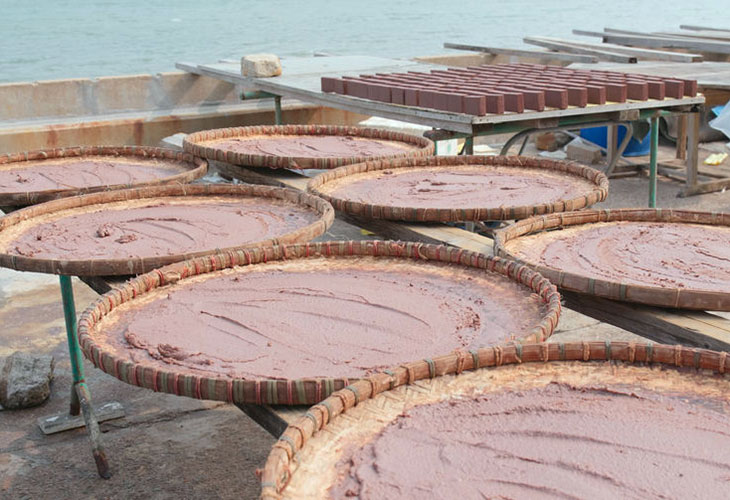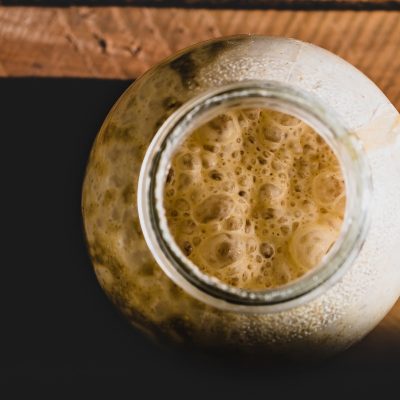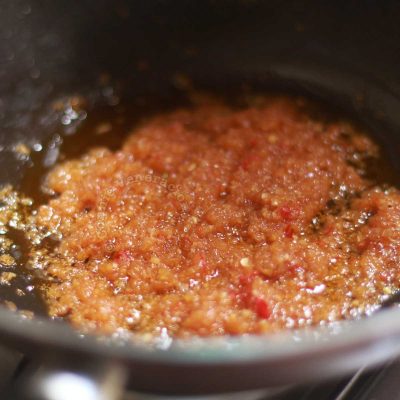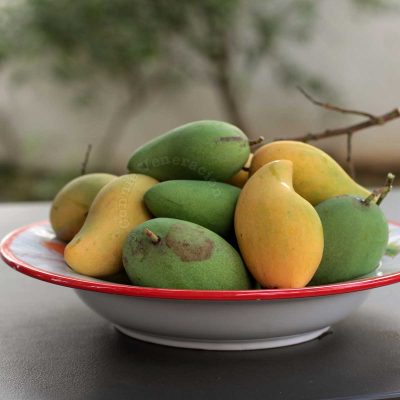In the photo above: shrimp paste spread in baskets to dry under the sun (foreground) and blocks of sun-dried shrimp paste (background).
What is shrimp paste?
The truth is, it is difficult, if not impossible, to provide a universal definition of shrimp paste. We know that is is salty and that the aroma can be so strong to make you turn your face away. But those who have cooked with shrimp paste know that a little amount of the stuff can transform a so-so dish into a gourmet’s delight.
At its most basic, shrimp paste is a mixture of small shrimps and salt that have undergone fermentation. It is common in Southeast Asia and some parts of China. It is kapi in Thailand, belacan in Malay, bagoong in the Philippines, terasi in Indonesia and mam tom in Vietnam. And those are just the common names. Regional variants within some countries have other names.
Shrimp paste is sold wet or dry, smooth or chunky. Wet shrimp paste is not shrimp sauce.
Historically, shrimp paste was developed in coastal villages. But of course, right? Very small shrimps have no market value so fishermen and sellers in the fishing industry had to find ways to put value in them. There’s dried shrimp and there’s shrimp paste.
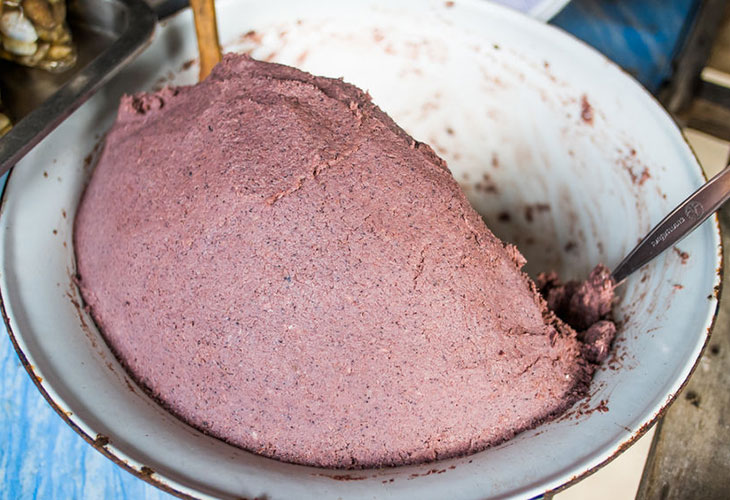
In some cuisines, the shrimps are sun-dried before they are crushed, mixed with salt and fermented (or fermentation happens during sun-drying). In others, the shrimps are cooked before fermentation. And then, there are “fresh” shrimp pastes where the shrimps are simply mixed with salt, allowed to ferment for a few days and sold as is.
Dry shrimp paste is often sold in blocks. When you break a off a portion and rub it between your fingers, it pulverizes. The appearance of wet shrimp paste varies depending on how it was prepared. It can be so smooth that you can’t see the shrimps or it can be chunky and whole shrimps are visible. Chunky or smooth, wet shrimp paste is generally soft but not soupy. Moist would be a more appropriate description.
What is shrimp sauce?
To understand what shrimp sauce is, it is essential to first have a working knowledge of the dipping sauce culture in Asia. Dipping sauces are so culturally significant that we have special saucers for them.
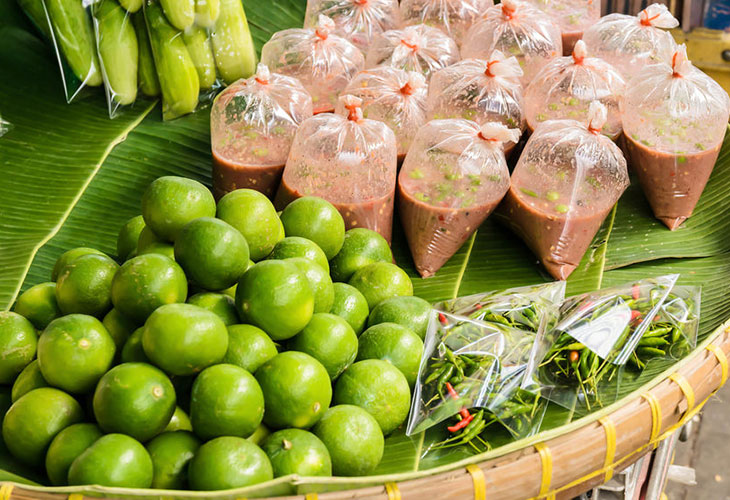
Unlike Western countries where condiments on the dining table consist mainly of grocery-bought sauces like ketchup and mustard, in Asia, there is an appropriate dipping sauce for almost every dish especially fried and grilled ones. What’s good to dip your spring roll in, for instance, depends on whether it is fried or fresh. And what’s good with fried spring rolls isn’t necessarily the best partner for crispy pork belly. And so on, and so forth.
Shrimp sauce, or mixed shrimp sauce to be more accurate, is essentially a dipping sauce. It is made by cooking (or simply mixing) shrimp paste with seasonings, spices and, sometimes, herbs.
Shrimp paste / sauce buying guide
Although most products are clearly labeled shrimp paste or shrimp sauce, it is not always wise to rely on them. So much get lost in translation. It is better to be able to tell the difference just by looking at the product or by reading the ingredients list on the label.
The photo below shows bags of shrimp sauce. You can tell because you can see the chilies through the plastic bags. It is, therefore, easier to conclude that this is not wet shrimp paste that you can use for cooking because it has added ingredients that may alter the flavor of the dish.
Buying ready-for-the-table shrimp sauce is tricky. Unless you frequent a seller whom you trust, or you’re getting a sealed product, it is a better (and safer) alternative to buy shrimp paste and make your own shrimp sauce at home.
The color factor
Don’t be fooled by marketing gimmicks that say 1) good quality shrimp paste is pink to magenta or 2) the stronger (i.e. the more pungent) the smell, the better the quality.
The color of shrimp paste ranges from gray to light pink to magenta to reddish brown. The color depends on the shrimps native to the area of production, the fermentation process (and drying, in case of dry shrimp paste) and whether or not other ingredients are added. In the Philippines, for instance, a red fermented rice product is added to produce shrimp paste with an attractive color.
The smell factor
All shrimp pastes have a strong smell. It’s fermented seafood, after all. But not all shrimp pastes are created equal. Some shrimp pastes do have a more appetizing smell than others. Shrimp paste makers guard their formulas jealously so it’s hard to account for the differences in aroma. But I’m thinking that it’s the shrimp paste made from shrimps that have been sun-dried PRIOR to grinding and fermentation that have a more pleasant aroma.
Using shrimp paste in cooking
Sparingly. Use sparingly. Shrimp paste is not one of those ingredients (like cheese or bacon) where the more you add, the better the dish.
Shrimp paste is added to a dish for nuance. It gives food a depth of flavor. There should be a hint of shrimpiness in your dish. But just a hint. If the smell of the shrimp paste in your dish overpowers the aroma and flavor of all the other ingredients, you used too much.
And because shrimp pastes vary in saltiness, start with less rather than more. If the recipe calls for a teaspoonful, start with half and just add more as needed.
Storage
You may have heard or read somewhere that because shrimp paste is fermented food, it does not require refrigeration. That’s not always true.
Dry shrimp paste may be kept at room temperature but keeping it in the fridge lengthens its shelf life.
Wet shrimp paste is really better off in the fridge. If you bought yours canned, you may keep it in the pantry while unopened. After opening, transfer the contents of the can in a jar and keep in the fridge.
When storing shrimp paste, always keep in a tightly sealed container. Otherwise, the smell will leak out and affect other food in the fridge.
Is fish sauce a good substitute for shrimp paste?
Back when I was allergic to all crustaceans, I used to think so. Today, I know better.
No. Don’t do it.

